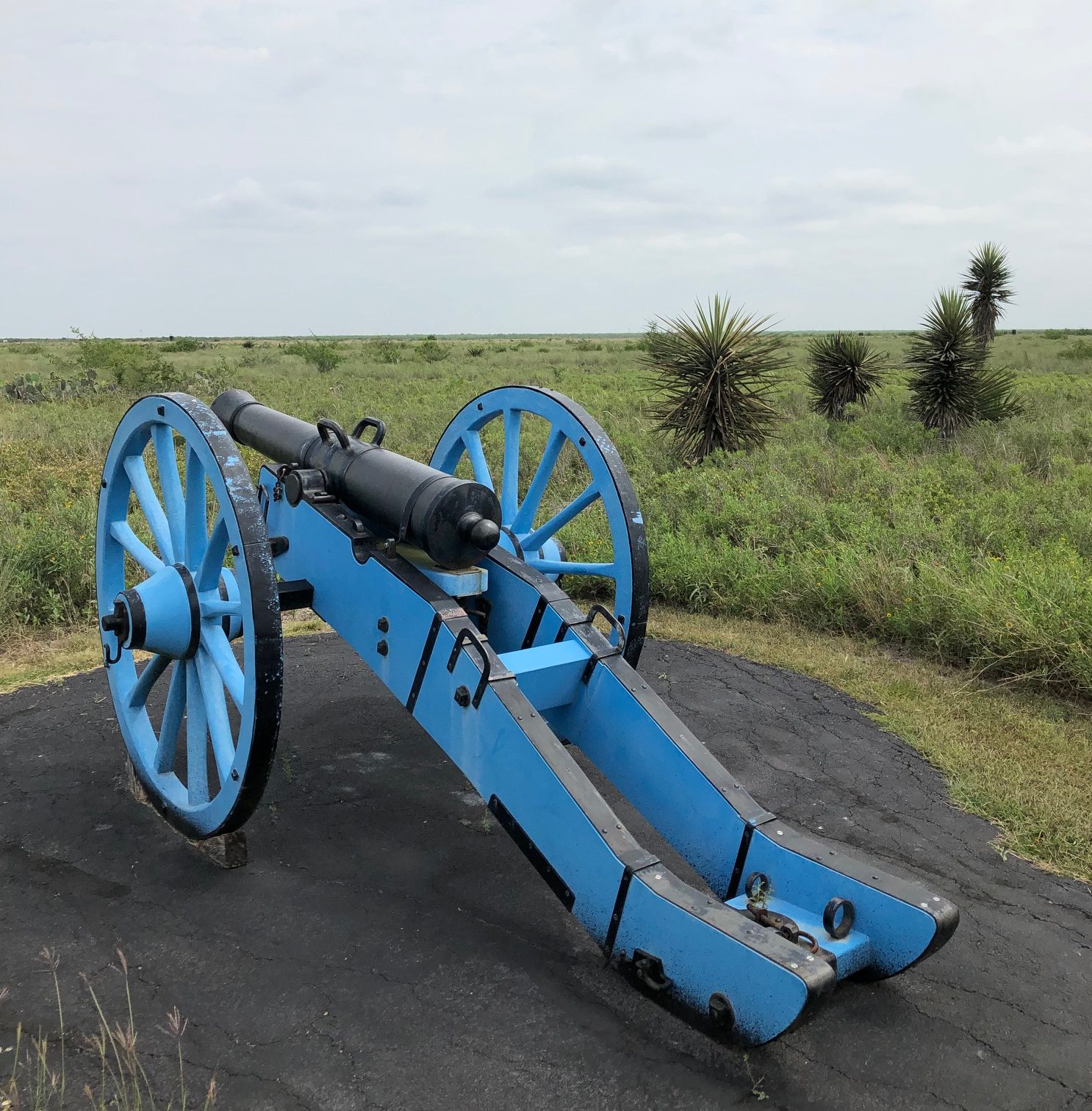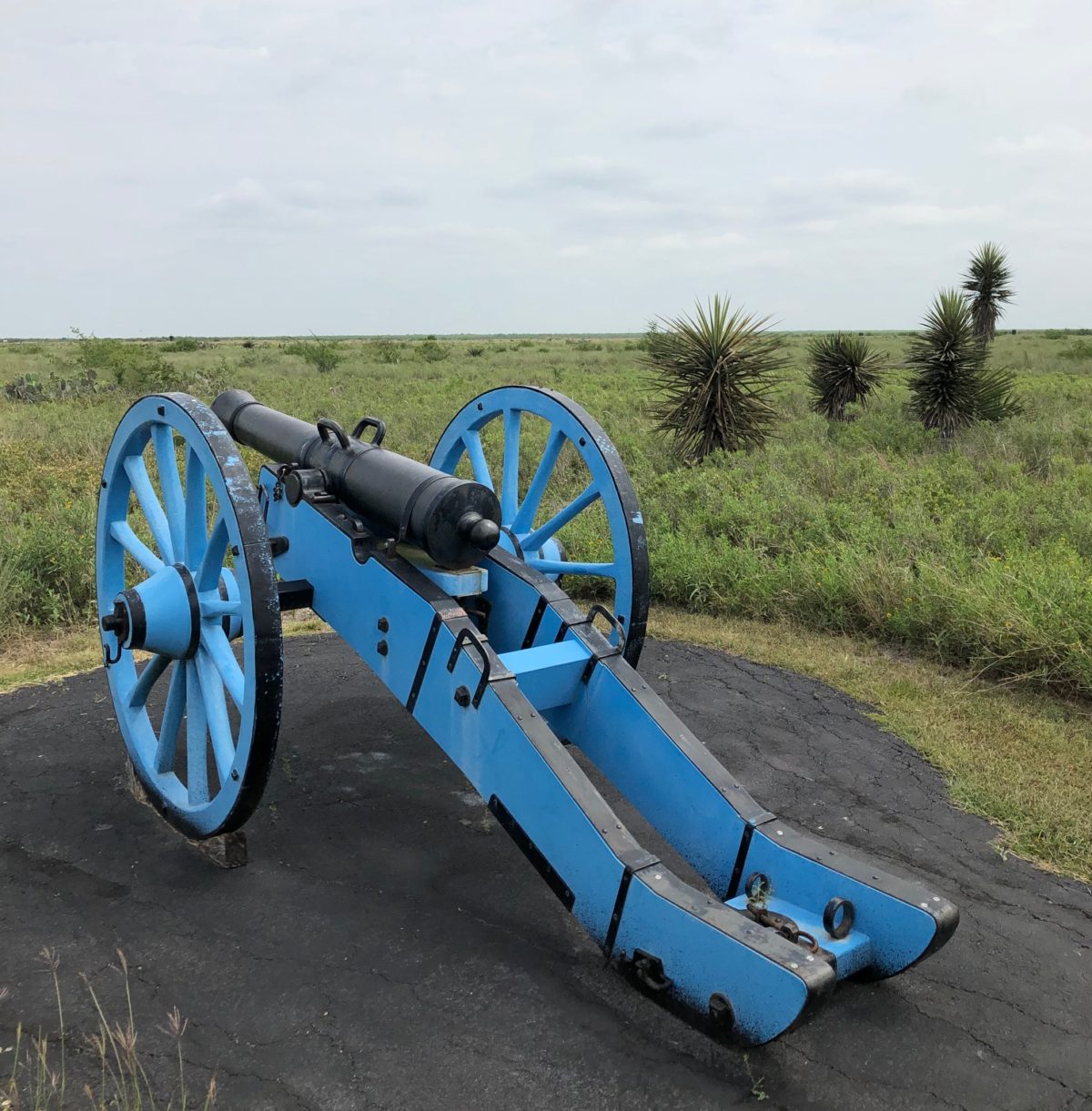Palo Alto Battlefield: The War Begins
Palo Alto Battlefield National Historical Park, in what is now Brownsville Texas, was the site of the first clash in the Mexican – American war. This battle on May 8, 1846 was only the first in a two year long war that changed the map of North America.
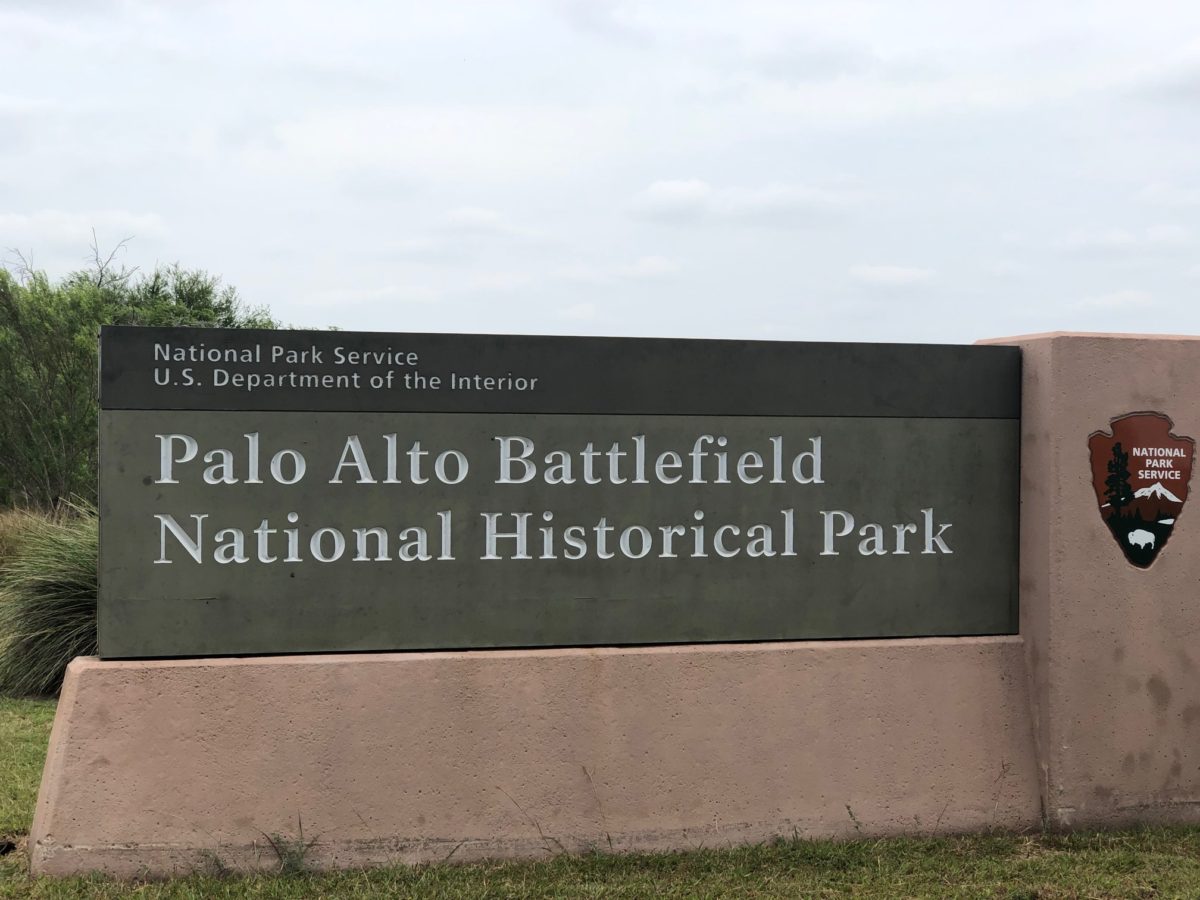
Expansion into Texas
The sentiment in the 1840’s was one of expansion. One of the first acts of President James Polk was to support the annexation of Texas. Mexico challenged this annexation, and even those who agreed, did not agree with where the border was. The Mexicans claimed all the territory up to the Nueces River (near today’s Corpus Christi), whereas the Americans claimed that Texas extended all the way south to the Rio Grande.
That’s a pretty big area – it took us over 2 hours to drive from Corpus Christi to Brownsville!
When the two armies met on the plains of Palo Alto, it began a series of events that ended with the Treaty of Guadalupe Hidalgo in 1848, under which Mexico ceded territory that included parts of California, Colorado, Utah, Arizona, Nevada, New Mexico and Texas!
Palo Alto Battlefield
Today you can walk out to the battlefield, where you can see the canons lined up facing one another. There is a line of flags that shows the length of each battle line – stretching close to 1 mile off into the distance. It’s easy to visualize thousands of men, horses and artillery facing off against each other across the plain.
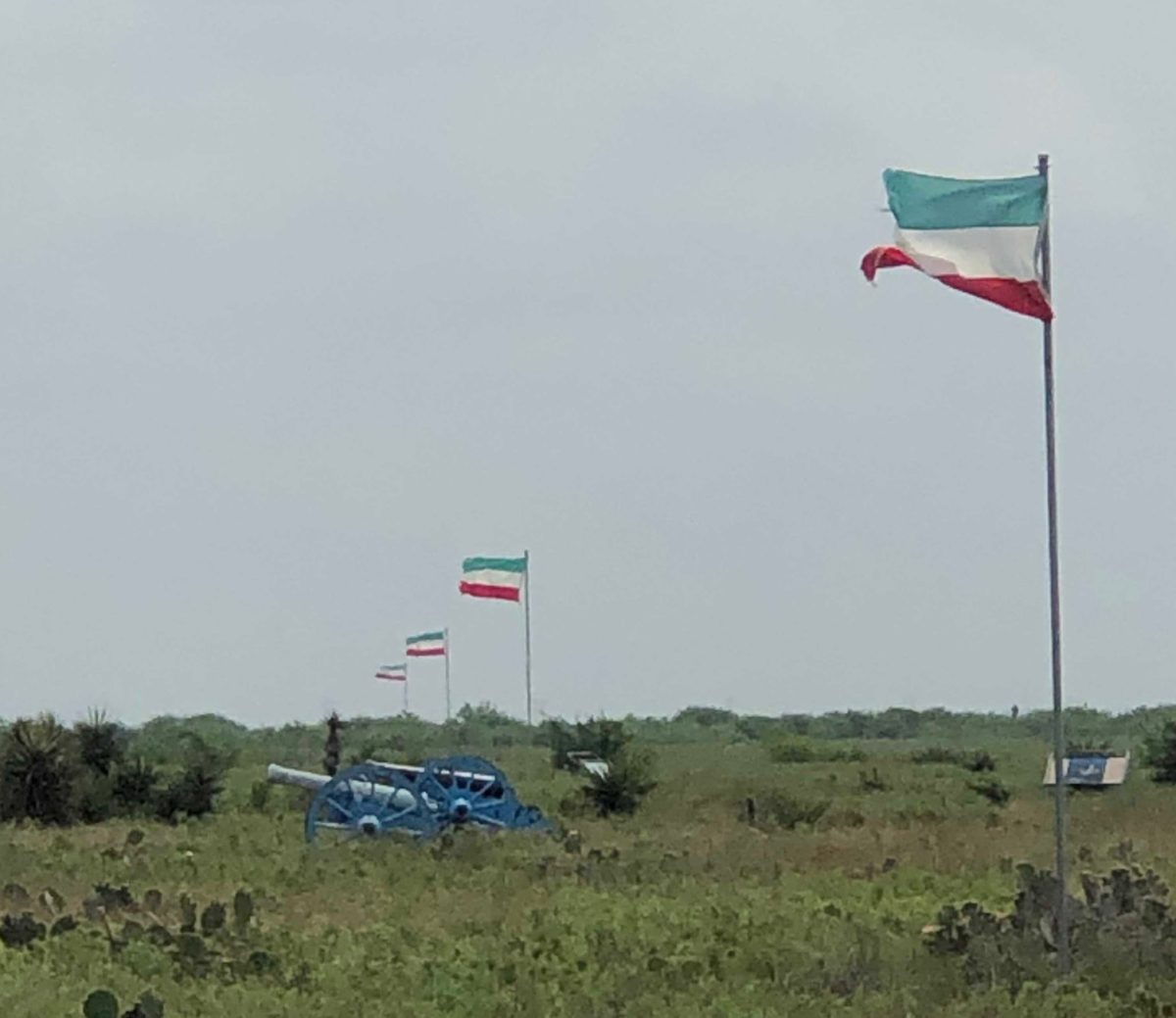
There are lots of canons on display. Interpretive signs talk about the new light artillery used by the US. These were guns that they could more easily move and turn to face an oncoming attack. This was the first time this technology had been used in battle and was one of the main reasons the US won here.
What was interesting to us was the battlefield conditions, far different from what the US soldiers had train in back east. Surrounded by impenetrable thickets, full of thorny desert plants, the plain was an expanse of long grasses – a great hiding place for rattlesnakes!
Also unlike battlefields in the east, where you hear about fighting in the mud and rain, in these dry prairies the sparks from the artillery set the grass on fire. One plaque talked about how the wall of flames between the two armies caused a stoppage in the battle for almost 2 hours!
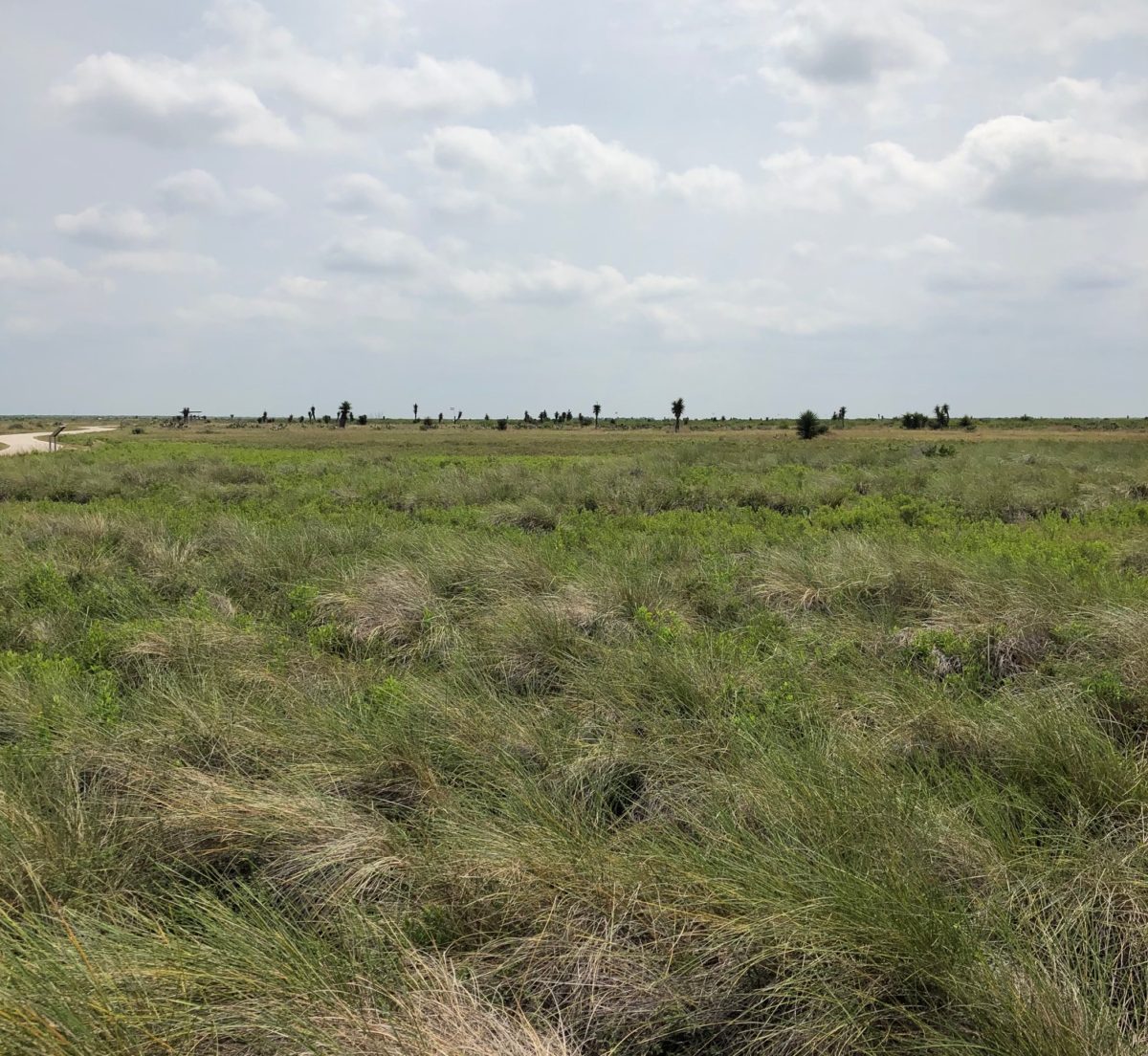
Palo Alto Battlefield National Historical Park
Palo Alto Battlefield National Historical Park protects 3,400 acres. The visitor center offers a movie and there are lots of artifacts on display. The highlight, of course, is the walk through the battlefield. It’s well marked and there are lots of interpretive signs and benches. There is also a bicycle path that starts at the park.
They have a really nice bookstore that includes educational books on the Mexican American war. Prior to our visit we didn’t really know much about this war.
The Presidents
Something that surprised us during our visit was how this national park unit is related to three former US presidents.
President Zachary Taylor
Zachary Taylor was the American general who led the battle of Palo Alto, sent there by the president to establish the US border as being the Rio Grande. Taylor led 4,000 men men to victory here; and his victories during the Mexican American war led to his election to the white house. He become the 12th president of the United States.
President Ulysses S. Grant
The battle at Palo Alto was the first for Ulysses S. Grant. A lieutenant in this battle, he went on to participate in other battles in the Mexican American war and then rose to prominence during the Civil War. He became the 18th president of the United States. It was cool to think of him as a young man in his first engagement.
President James Polk
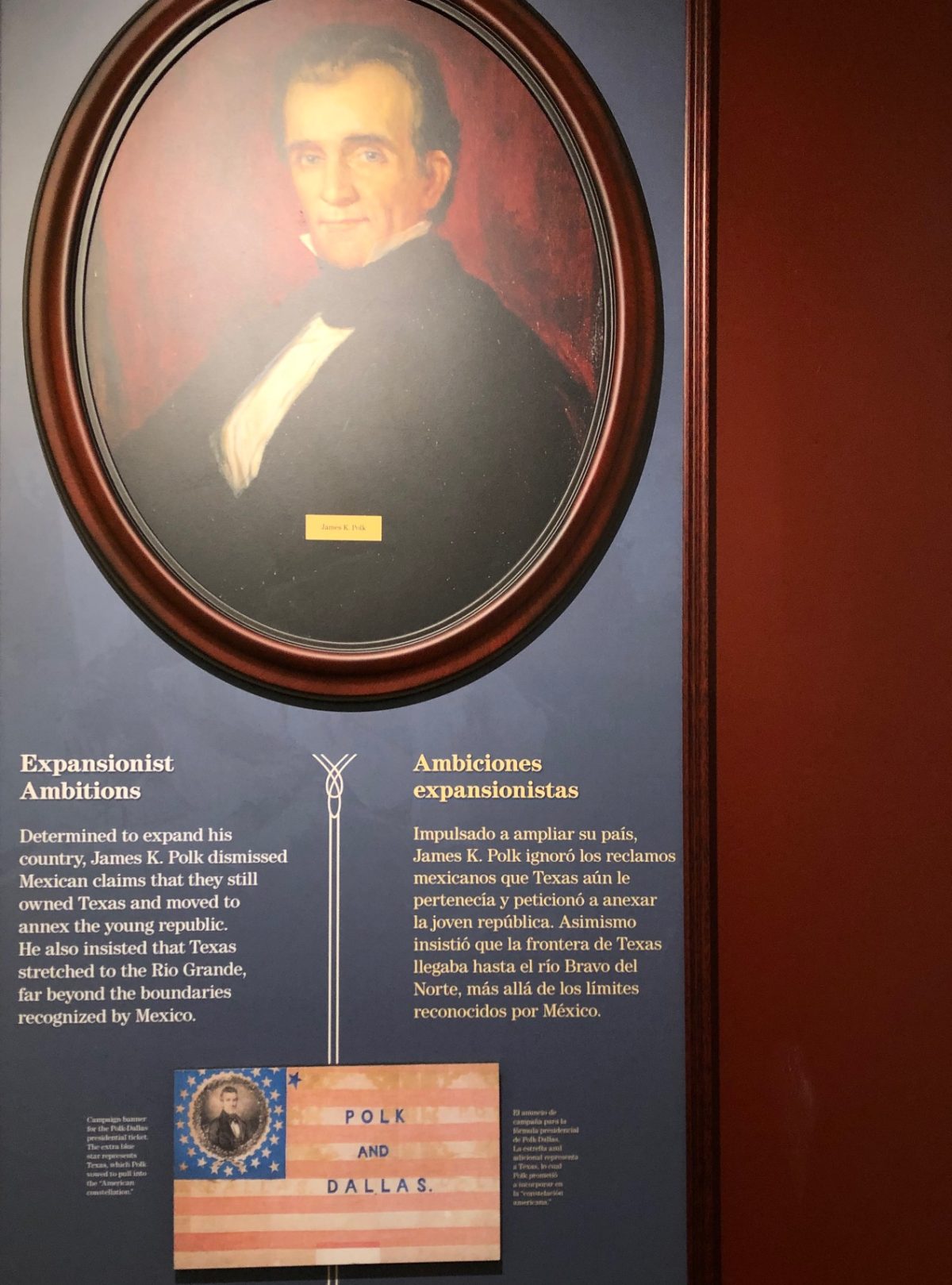
One of our favorite presidents is the 11th US President, James Polk. Most people aren’t all that familiar with Polk even though he was instrumental to expanding the United States to include most of the American West, Washington and Oregon. He was a dark horse in the election and promised to be in office for only one term; a promise he kept. He certainly proved that much can be accomplished in just four years!
We hope that President Polk’s home and museum in Columbia Tennessee will become a National Park Unit some day. This is one we’d like to visit.
#FindYourPark
#SeeAmericaFirst
